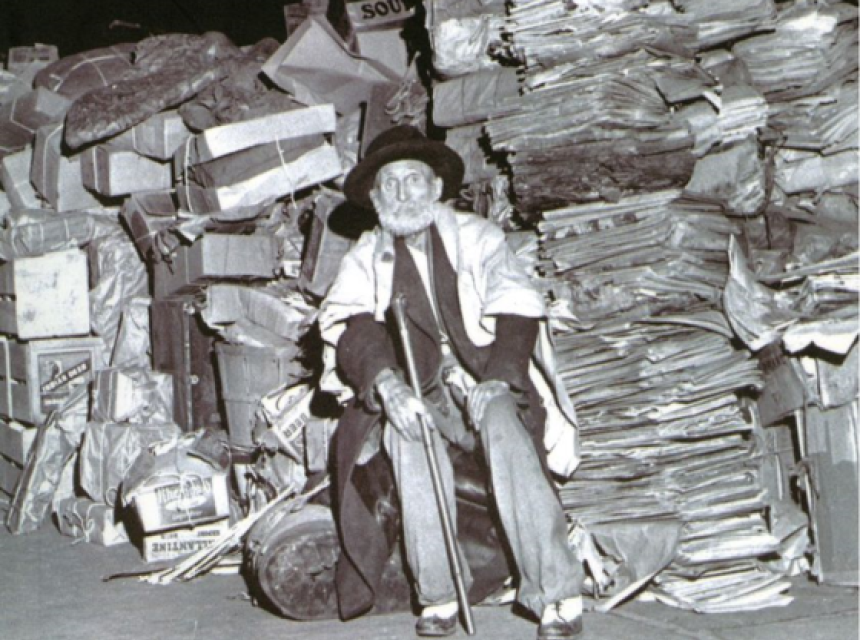On Dec. 12, 1951, 90-year-old Honoré Jaxon was deposited on the sidewalk outside his midtown Manhattan apartment in New York City. Behind him steadily grew a pile of books, magazines, and papers. By the time city officials had finished emptying his cellar apartment, the stack measured six feet high, 10 feet deep, and 35 feet long. He was being evicted.
Jaxon’s photograph, with his library now taking up a good part of a city block, ran as a human-interest story in the New York dailies. But little was said about how the disheveled old man was once the voice of settler protest in the Saskatchewan country in the 1880's and worked closely with the insurrectionist Métis leader Louis Riel during the Red River Rebellion.
Jaxon was born William Henry Jackson in Toronto in 1861. Educated in Classics at the University of Toronto, he moved with his family to Prince Albert, then part of the North-West Territories, in 1882.
In 1883, he launched a Prince Albert newspaper: “The Voice of the People.” He also played a prominent role in the formation of a Settlers’ Rights Association that included French and English Métis leaders, as well as disaffected whites. The failure to secure action led to the return of Louis Riel in the summer of 1884 to head the protest movement.
Jackson admired Riel and came to serve as his personal secretary, helping to organize meetings and send petitions. He even changed his name to Honore Jaxon in solidarity with his Francophone comrades. But when the government ignored and threatened the settlers, Riel opted for more forceful measures to win justice and declared a Métis provisional government at Batoche on March 19, 1885. Jaxon then took up arms with Riel.
The Canadian government was determined to prosecute any whites who participated in the Rebellion, and Jaxon was charged with treason-felony because of his association with Riel. Jaxon was held in Prince Albert for more than a month before being taken by wagon to Regina for trial. Jaxon was found not guilty by reason of insanity. He was committed to the Selkirk Lunatic Asylum in Manitoba, a stay that lasted only until Nov. 2, 1885, when he escaped from the facility.
Jaxon soon surfaced in the Chicago area as a labor and socialist organizer. For many years he was an active trade unionist and revolutionary, and helped lead strikes in Chicago and New York City, where he eventually settled. But his Saskatchewan days haunted him and he started collecting material about western Canada’s Indigenous peoples. Jaxon also began writing books on the subject and giving public lectures. But because he was a sole survivor of that Rebellion and was generally shunned as a relic from the past, he operated more and more on his own.
By 1951, Jaxon was destitute and in failing health. His documents and other historical materials included priceless firsthand records of the early progressive and labor movements in America and Canada. But the material eventually made his basement apartment a fire trap and led to his eviction that December.
Jaxon managed to save a small sampling of his papers, but the remaining two tons were sold as waste paper. He found refuge with a friend, but was hospitalized and died in the new year. With him went irreplaceable archives as well as a living embodiment of a revolutionary history Canada wants buried and forgotten.








